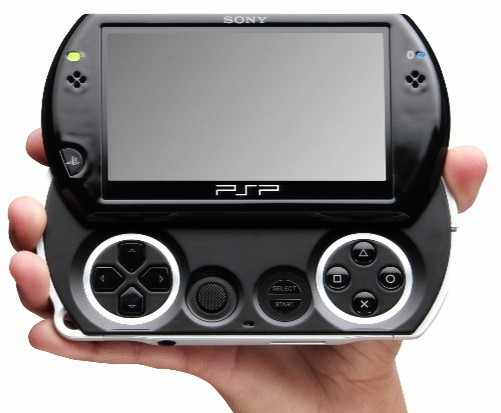While netbooks & nettops have been pouring into homes around the country, many netbook users have been craving a bit more power. Nvidia has promised this power bump with few comprises in their new ION platform which couples the ubiquitous Atom processor with a 9400M GPU instead of the standard integrated solution. This spring many saw demos of the added power ION brought to the table and the anticipation for real products grew.
Lenovo announced what would be the first ION netbook the IdeaPad S12, with promises of pre-orders in June and deliveries in July. Unfortunately when those promises became reality, Lenovo admitted it had fibbed a bit. While you can now buy a S12 – if you want an S12 with ION (the whole reason to buy the S12) you would have to wait until September-October. Marketing students will now ponder what Lenovo hoped to accomplish with such a deception…
Enter Gateway’s LT3103. Launched seemingly in response to the Lenovo bait and switch – another 12″, full keyboard, netbook with a better GPU just after the IrONic truth came to light. The company couldn’t have timed it any better if it was staged, but will this gift of circumstances translate into gang-buster sales? My guess is no. Sadly, Gateway completely missed the boat and provided customers with the opposite of what they wanted: instead of more power the gave less. Let me explain:
The LT3103 uses a AMD Athlon 64 L110 Single-Core Processor – which from what I can tell is an old Athlon 64 2800+ chip underclocked by a third. Now while Athlon is a more powerful CPU than the Atom, the power drain of the old CPU led Gateway to lower the clock speed significantly. Still the Athlon running at 1.3Ghz should be on par with the Atom at 1.6Ghz. Unfortunately, Gateway set the chip to 1.2Ghz. Strike 1.
The Radeon X1270 GPU in the LT3103 scores a meager 328 on 3DMark06 (todays reference for GPU power). While this is better than the 100-ish scores that Intel’s integrated graphics receives it is vastly below ION. The Asus N10 has a Atom chip + 9300M GPU (the closest real world product to the ION) scored 1417 3DMarks. ION netbooks with the better 9400M will probably score somewhere between 1600-2000 once they are on the market. And the slight gains here will be offset by the slight CPU losses. Strike 2.
Finally, Gateway has avoided making any battery claims thus far (always a bad sign) but we’ll give them the benefit of the doubt here. We’ll assume the LT3103 gets OK battery life. The older CPU and GPU will both consume more power than their standard fare netbook bretheren as will the larger 11.6″ screen. So it is safe to assume that battery life will be on the low end of the netbook typically long life spectrum – if not worse. Now had Gateway included enough extra umph in their latest offering to offset the power loss it would be one thing, but if it isn’t going to perform better than the average netbook… why would you settle for less battery life? Strike 3.
Now let’s look at what Gateway could have done to create a wildly successful product. The standard is well established: 10″ screen, Atom CPU, etc. etc. No guessing here. And customers are calling for larger screens, full keyboards, and more power – all without losing the portability and price. Now with AMD parts you can’t do all of these things but you could do all but one – and Gateway could have cornered the market for 3 months until ION really rolled out.
Take the LT3103 and split the difference on the underclocking and put a competitive GPU in it. Now we’re looking at 1.5Ghz Athlon besting the Atom by 15% and ATI X1400 with 3x the horsepower (1064 3DMarks) of the X1270 and a significant boost over integrated solutions. While this won’t best any full sized notebooks, you at least can wipe the floor with any netbook on the market. The CPU price should be the same and the GPU cost increase should be small. Meaning that only one area would be lacking in the checklist of “perfect” netbook: battery life. The power drain of this upgraded device would be even higher and most likely take it out of the realm of netbook longevity and down into notebook times. But here’s the thing: no one would care.
OK some people would care, but those people aren’t going to buy a 4-5hr life device anyway (assuming the original LT3103 could hit those times), they’ll go with one of the 8+hr devices out there. But many people would trade longevity for power as long as the size, weight, and most importantly price all remained in line. Gateway could have easily brought the upgraded device to market for $449 (instead of $399) and possibly thrown in a 2nd battery at $499. Many customers would gladly find an outlet or grab a second battery to have the most powerful netbook available. And right now those customers have 0 choices on the market. This fall there will be several. Gateway those sales could have been yours.

 Sony finally realized that one of the Ps in PSP was for Portable. And that those silly mini discs made the old PSP bigger and shorter on battery life.
Sony finally realized that one of the Ps in PSP was for Portable. And that those silly mini discs made the old PSP bigger and shorter on battery life. So you love Wii but miss those Old School greats like Tecmo Bowl or the Super Mario that started it all? Well now there’s a way! OK a free way.
So you love Wii but miss those Old School greats like Tecmo Bowl or the Super Mario that started it all? Well now there’s a way! OK a free way.